Protecting Gluten in a Weak Dough
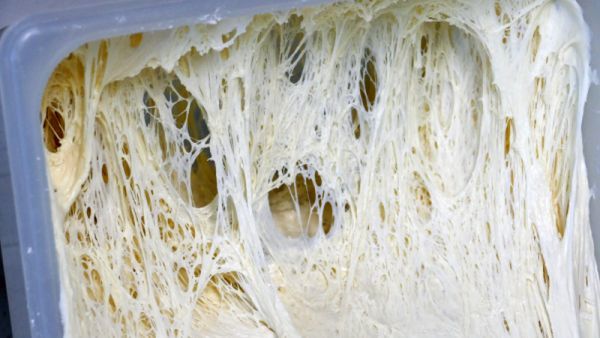

Autolyse, it’s what everyone does. However, were you aware that doing an autolyse when you are dealing with a weak dough can be detrimental? During autolyse the enzymes, especially the protease enzyme “eats” gluten. The purpose of that is to help make the dough more extensible (stretchy) so that it has a nicer open crumb and a bigger oven spring.
Autolyse actually weakens the dough, it weakens the gluten. Autolease also allows the gluten and fiber of the grain to absorb the water and become more fully hydrated. These can be two separate things, gluten weakening and dough hydration.
When you have a:
- Weak, low quality or low protein flour
- Extended long ferment
- Higher temperatures
- High enzyme activity including enzymatic flour and/or adding diastatic malt
- Weakened dough from additions (fats, seeds, bran, potatoes, squash, beets, raisins etc)
- Heritage/whole grains with weaker gluten
- Coarser milled flour
- (I might be forgetting a few, but any time you are dealing with dough that is weak, with a weak windowpane, a spreading dough, a dough that seems too wet, warm dough or dough that tends to over-ferment too quickly).
Then DON’T do an autolyse! Autolyse doesn’t automatically equal a better dough. It’s not always appropriate, especially when you have a weak dough or are using a weak/low quality flour. In these instances protect your gluten!
Things that will help protect the gluten of a weak dough are:
- Don’t do an autolyse.
- Add salt right away during mix. Salt acts to strengthen dough and it inhibits the “eating” action of the enzymes. Fermentation will slow down with the addition of salt, so adding it during mix will help when you have any of the reasons listed above for weak dough.
- Use cold or icy water during mix to keep the dough temperature down and slow the fermentation. If you mill your flour fresh, you can allow it to cool for a bit before mixing your dough.
- Finely mill your flour, it helps the gluten to bond better. The smaller the particles the less slicing damage they will do to the gluten.
- Use less mechanical mixing. Go for more of a “do nothing” or “do less” method which will minimize the gluten cutting of the bran and grain particles of whole grain flours.
- Add fats and other ingredients, that can interfere with gluten bonding, after the bonding takes place and you obtain a nice windowpane.
- Cool your dough by refrigeration when ever you feel it needs to be slowed down. Also chilling the dough BEFORE shaping will even out the dough temperature so it isn’t warm in the middle longer than the outside and it allows a more even slow rising in the retarder/refrigerator.
- Mix or blend stronger flours with weaker flours.
- Blend strong white bread flour with a weaker whole grain flour.
- Use a lower hydration, it gives the gluten a better chance at bonding and slows down the enzyme action.
- Shorten your ferment time if possible.
- Cool the dough if you need a longer ferment.
- (more controversial) Add ascorbic acid (not citric acid) for gluten strength or vital gluten flour (I don’t care for vital gluten myself).
- Use a double or triple hydration technique to get a strong bonding of the gluten before adding additional water (see photos below).
- Be gentle when handling the dough and shaping it.
- Don’t spray a lot of water on the dough before baking it (it can weaken the outer crust).
- Use a younger starter (fed within a few hours) with stronger gluten instead of a weaker broken down starter(which is past it’s prime and hasn’t been fed for a long time).
- Consider sifting out the coarser bran, soften it with boiling water and then add it back to the dough after the gluten is developed and the bran is cooled.
- Err on the side of slightly under-proofing for the final proof.
- Use a very strong flour if you have an extreme fermentation schedule, higher temps or a dough with lots of gluten weakening additions.
- Crush a vitamin C pill and use a small amount in your dough when mixing. Vitamin C is also called Ascorbic acid and it really helps strengthen your gluten. Experiment with the amount you need, but keep it on the “very small amount” side. Too much and it will break down the gluten instead of strengthening it. Ascorbic acid is also the main ingredient for the “fruit fresh” powder/liquid you use for keeping fruit from discoloring when canning fruits. http://bakerpedia.com/ingredients/ascorbic-acid/
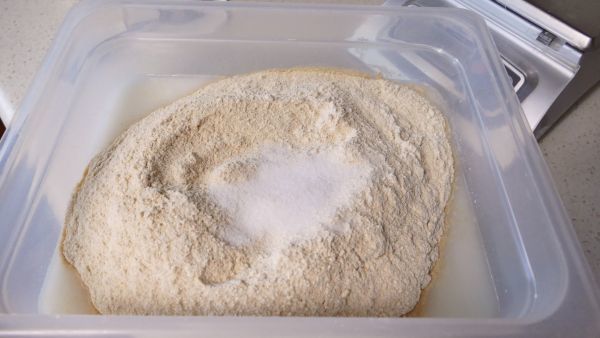
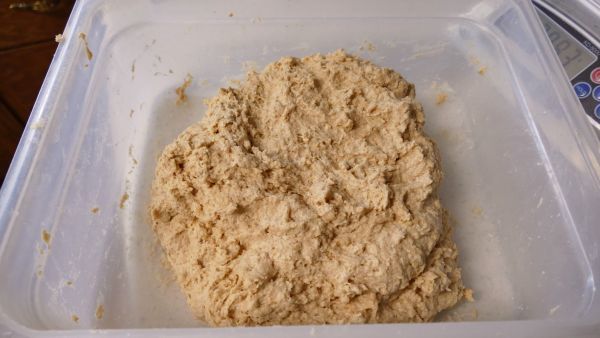
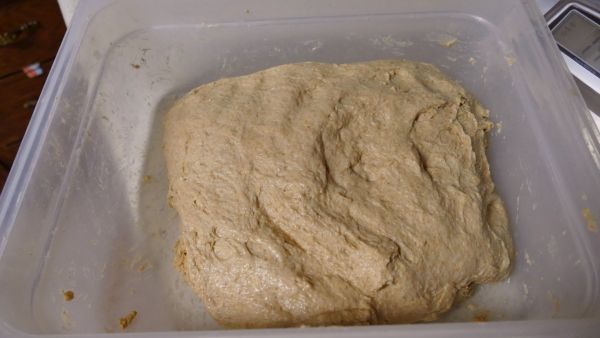
You CAN still rest the dough and allow it to hydrate and absorb water. Just because you add salt during mix to slow down enzyme action doesn’t mean you can’t also allow the dough to rest and hydrate before submitting it to more mechanical action (folding, mixing etc).
Technically you might not call it an autolyse, but resting the dough after initial mixing is a good thing to do. Allow the gluten to bond, hydrate and develop on it’s own. Allow the fibers and bran particles to become more fully hydrated and soften. Give the phytic acid a chance to break down to improve the nutrient absorption and digestibility of the bread.
Test Your Flour: Follow the videos and learn how to test your flour to see how strong the gluten is. See here: Test Your Flour
Double or Triple Hydration:
To use the double or triple hydration method, you withhold some of the water from your dough during the initial mixing. Because your dough will now be a lower hydration, the gluten bonds more strongly. Once it’s had a chance to bond (maybe after the first hour) then during the dough folds begin to add back the water you withheld.
If you do this once, it’s a double hydration method, if you do it twice it’s a triple hydration method. The first mixing of the dough is the first hydration.
Don’t take this too far though, only change the dough hydration by a total of 10-15% to keep the gluten strands from over-weakening. Like if you go from 60% hydration dough to 80% your dough will be weaker than if you went from 65% or 68% to 80% hydration.
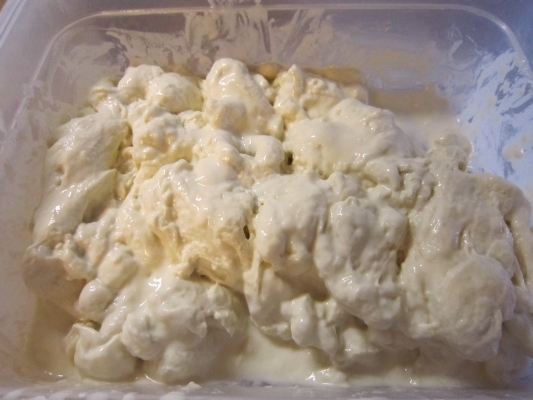
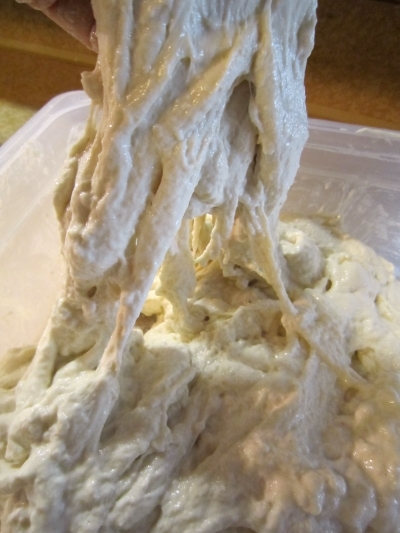
One of the reasons to use minimal mechanical dough mixing (folding or mixing) is to minimize the cutting action of the gluten by the bran and particles so the cooler the dough, the longer it can ferment and the more the gluten with bond and develop on it’s own without the intervention of mixing/folding. It can be a fine line to extend your dough ferment so you can avoid mechanical action and shorten the ferment so you can avoid the breakdown of the gluten by the enzyme action.
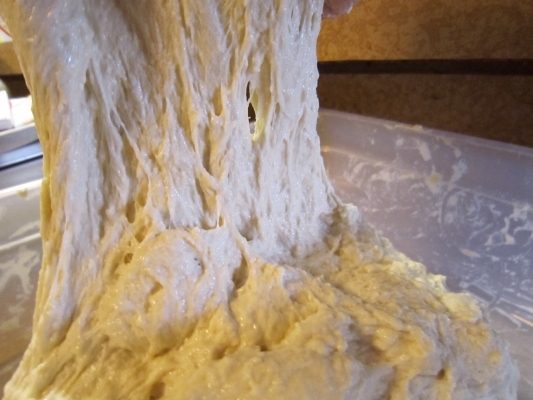
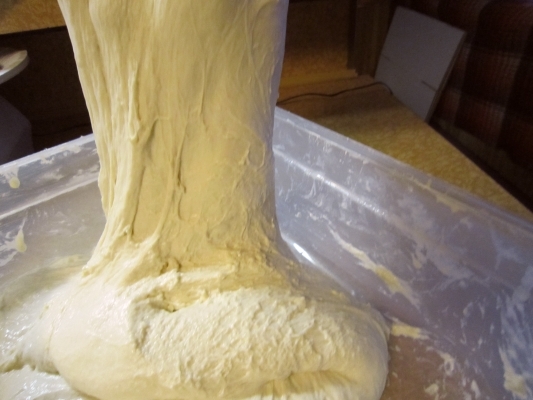
If I think of anything else I’ll add it to the list. If you can add to the suggestions for protecting gluten in a weak dough, do so in the comments below. I look forward to your wisdom.
For more info on sourdough baking see HERE or HERE
For an online baking course that will help you test to see if your flour is weak, see Sourdough Bread Baking Exploration
Happy Baking Everyone!


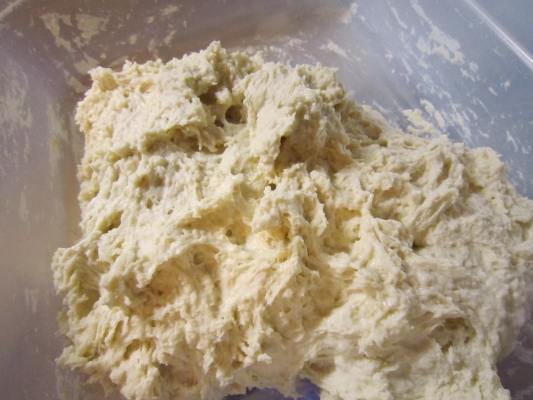
[…] your slurry test demonstrated that your wheat is weak. What to do? Teresa Greenway has an excellent article on just this topic. Without going into all the details described there, I would emphasize the […]
This comment is in reference to doughs that undergo long fermentation at warm temps.
Realize that just because the ambient temperature of the room or even a proofer (if used), the dough will become much warmer than the room or proofer temps. Allowing some air to escape the container is a good practice, but even though, the fermentation of the dough will cause the dough temps to rise higher. Proofers such as a Brod & Taylor are more difficult to use during warmer months. For example; if the room temp is 75F and the proofer is set to 77F, the dough temp will rise higher than 77F because of the heat generated by the fermentation of the dough. For the proofer to work efficiently the air must be ~5 or 6 degrees cooler than the target dough temp. During my testing I’ve seem the dough climb above 83F in the example above.
Lesson Learned –
Monitor the temperature of the dough, not the ambient temp.
Thanks Teresa for pointing out so many useful examples of circumstances that will break down the gluten in the dough.
I always enjoy your insights Dan. Thank you!
Love this information! Temperatures here in Florida are so warm all year. I only set the AC to 76 in daytime so i think that’s part of the problem. How much vitamin C per loaf?
Actually I’m not sure if our organic flour at the coop is ‘strong’. So I think I’ll try both ways. Now that the weather is fine for winding back roads, I have heard of a miller who has strong whole flour!
Great information.
I am going to try adding the salt right away and see what happens.
Teresa, why do you not care for vital wheat gluten as a protective agent for a weak or challenged dough mix? Are there some situations where it would be acceptable? or particularly bad?
Thanks,
Sharron S.
Julian CA
If you have to use it because finding a strong flour in your area is challenging, then by all means use it. It is just a tool. However, I feel that you should try to use the flour you have and make the best of it, bring out the best in it. Work with it and do what you can to optimize it’s qualities. Vital wheat gluten can impart a toughness to the crust and crumb. So if you need to use it, use it sparingly. I have used it in the past when I just couldn’t get good strong flour for making bagels.